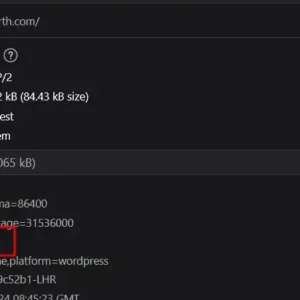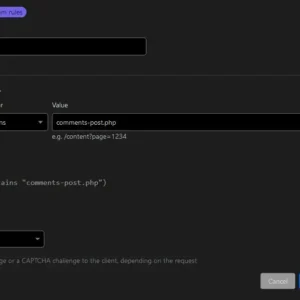Tag: Cloudflare
HTML Page Caching with WordPress & Cloudflare
HTML Caching vs Static Asset Caching If you use Cloudflare to proxy your website, you can take advantage of their various caching services. The most common one is static asset caching. Static asset caching refers to media such as images, CSS files and Javascript files. Between deployments and page reloads, these assets typically don’t change, […]
How to block WordPress comment spam with Cloudflare
A little while ago I wrote a post titled ‘How to block Contact Form 7 spam with Cloudflare‘. This explained how I use Cloudflare’s WAF rules to prevent any spam form submissions coming through with the popular Contact Form 7 plugin for WordPress. Even if you don’t use Contact Form 7, I’d highly encourage you […]
Using Cloudflare R2 Buckets with WordPress
What is Cloudflare R2? Cloudflare R2 ‘…allows developers to store large amounts of unstructured data without the costly egress bandwidth fees associated with typical cloud storage services’. It is essentially the same service as Amazon’s S3 storage buckets, but with the key selling points of having a really generous free tier and being overall cheaper […]
Use Cloudflare SSL Certificates with Plesk
Introduction I use Plesk to manage all of my websites on a secure VPS. Along with this, I use Cloudflare’s CDN to help boost speed and security. A nice feature within Plesk is its integration with Let’s Encrypt’s free SSL certificates. This allows certificates to be generated automatically with a validity period of 3 months. […]
Host your Emails while using Cloudflare’s DNS
Introduction In this post, I will show you how to set up your DNS within Cloudflare so that you can utilise Cloudflare’s CDN for your website whilst hosting your emails. This post assumes you already have your emails set up and hosted so that they can work when Cloudflare isn’t in use or the DNS […]
How to block Contact Form 7 spam with Cloudflare
Why not use reCaptcha? When it comes to combating spam in Contact Form 7, the go-to solution for many is Google’s reCaptcha. With its affordability, ease of setup, and non-intrusive nature, reCaptcha v3 seems like a reliable choice. However, there have been instances where reCaptcha has caused unexpected issues for users attempting to submit forms. […]
Search
Tags
Analytics Cloudflare CRON Django Docker Dokploy Email Hosting Git Hermitclock Laravel NGINX NPM PHP Plesk Pygame Python Snippets Wagtail WireGuard WordPress
Categories
Recent Posts
- Using wagtail-seo Hours of Operation in Templates
- Adding Request Headers – Dokploy & Traefik
- Changing Wagtail ChoiceBlocks Without Migrations
- I rebuilt Hermitclock with Wagtail & Django
- Dockerise Python with a Background CRON runner






